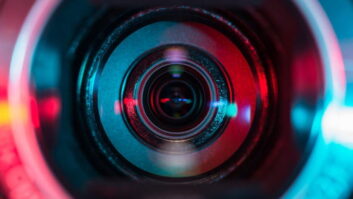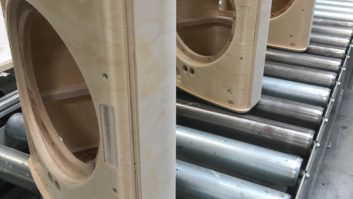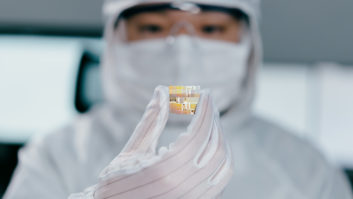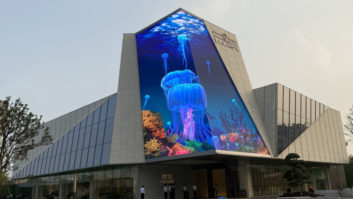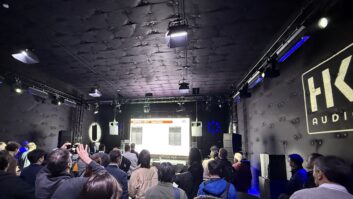When it comes to market surveys there is the instant snapshot conclusion of how business has been. Then there is the more considered evaluation of what has been going on. Which is certainly how the last three years should be approached and in relation to professional audio.
The general consensus on the period pre-2020 is that touring, musical theatre and events had been growing significantly, with installations also providing strong demand for pro audio products and technologies. Once Covid-19 struck, live performance stopped almost overnight. “Generally speaking, the market had strong momentum [before Covid] but certain sectors and regions performed better than others,” confirms Blake Augsburger, founder and chief executive of LEA Professional. “Pro audio, commercial AV and residential markets developed distinct sectors pre-pandemic and each grew and evolved at a different pace.”
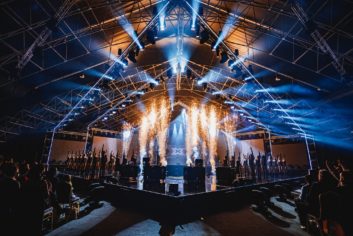 Once lockdowns and the pandemic itself became part of everyday life, Augsburger says there became an “urgency” for AV systems to support distance learning, remote services, socially distanced events and business meetings. “In some ways, AV was never more important and it became a well-funded national priority for many governments,” he says. “Contrast this to other pro audio sectors like performing arts, which were immediately adversely affected and received little support. Fragmentation continues to be an issue and so different regions will recover at varying paces but generally, with the exception of Eastern Europe, the market is improving and the potential for the pro audio market is strong.”
Once lockdowns and the pandemic itself became part of everyday life, Augsburger says there became an “urgency” for AV systems to support distance learning, remote services, socially distanced events and business meetings. “In some ways, AV was never more important and it became a well-funded national priority for many governments,” he says. “Contrast this to other pro audio sectors like performing arts, which were immediately adversely affected and received little support. Fragmentation continues to be an issue and so different regions will recover at varying paces but generally, with the exception of Eastern Europe, the market is improving and the potential for the pro audio market is strong.”
STEADY GROWTH
Kalle Hvidt Nielsen, chief executive of DPA, observes that pro audio for live events had been experiencing a period of steady growth leading up to 2020. Once the pandemic was declared, things changed: “Many of the segments that DPA support were hit very hard, most especially live performance and theatre. Houses of worship also found themselves without in-person worshippers.”
On the live touring side, d&b audiotechnik saw its business, which also includes venue installations, go from what chief marketing officer David Claringbold describes as “robust” to being hit severely. “The pandemic has had a big impact on the industry, no two ways about it,” he says. “And for many the re-emergence from the crisis is slow and challenging. The impact is still being felt worldwide. However, if we are able to take a positive from this pandemic, it’s that as a manufacturer we were given a chance to re-evaluate. The pandemic vindicated our investment in installation systems and markets [because] many projects were brought forward, providing us with essential cash flow.”
Now that lockdowns are, we hope, a thing of the past, Claringbold says there is a “very real ‘hunger'” within the pro audio industry to engage in live events again, reflected in strong demand for systems.
Martin Audio is similarly seeing a return to pre-Covid levels of revenue, if not higher, after the collapse of the live sector. “Some rental companies were able to weather the storm by working on hybrid and virtual events and some pivoting to installation work but the industry lost companies while many technical professionals left for other jobs,” comments James King, director of marketing.
The installation sector, King adds, “fared slightly better” despite there being fewer projects. “Some people used the lockdown to refresh and upgrade systems while others were committed to opening new venues. The opportunities these projects presented were slightly more open than previously due to not all manufacturers being in a position to supply.”
STANDING STILL
Bose Professional also saw live sound come to a “standstill”, according to Hans Vereecken, sales manager for EMEA. “We needed to quickly readjust our focus, which reduced our planned activities,” he comments. ” The pro AV market overall is coming back to a pre-Covid state at a steady rate, [although] some markets like live sound will need longer to recover. Other markets, like conferencing and workplace AV, continue their growth path from pre-Covid times.”
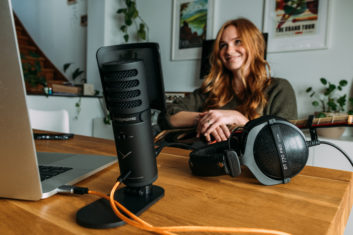 While there was a shared experience during the pandemic, companies faced different problems depending on their distribution set-ups. TOA UK works both through big distributors with its own retail networks; and directly supplies smaller companies, installers and event management teams. “The trend with distributors pre-pandemic was to bulk order popular stock for their warehouses so they had a constant flow to meet demand from customers,” explains Ian Bridgewater, director and technical sales manager. “Smaller companies either specify and buy for clients or buy for their own stock. In the UK, distributors partly or fully closed, due to both the events and entertainment industry being so heavily affected by the pandemic and by staff not being on site for deliveries and despatch because they were working from home. Music shops, event management companies and technical services simply closed during lockdown, with some changing their business model from face-to-face to online.”
While there was a shared experience during the pandemic, companies faced different problems depending on their distribution set-ups. TOA UK works both through big distributors with its own retail networks; and directly supplies smaller companies, installers and event management teams. “The trend with distributors pre-pandemic was to bulk order popular stock for their warehouses so they had a constant flow to meet demand from customers,” explains Ian Bridgewater, director and technical sales manager. “Smaller companies either specify and buy for clients or buy for their own stock. In the UK, distributors partly or fully closed, due to both the events and entertainment industry being so heavily affected by the pandemic and by staff not being on site for deliveries and despatch because they were working from home. Music shops, event management companies and technical services simply closed during lockdown, with some changing their business model from face-to-face to online.”
SLOW DOWN
Genelec had also been experiencing healthy market growth but the impact of Covid was “a huge slow down – not to say dead stop” in new projects, according to AV business development manager Sami Mäkinen. “End customers in particular started to get very cautious about undertaking new projects. Fortunately, almost all our ongoing projects were finalised, so these were less affected. New projects are definitely starting to appear now but no one knows how the world will turn in near the future. Covid challenges might turn into war challenges. Once again we’re faced with a big unknown factor that will clearly have an impact but how big outside Russia and Ukraine nobody can estimate.”
When it comes to what the pandemic did to the pro audio market, distributors and systems integrators were perhaps even more at the sharp end. In the UK Polar Audio works in both the pro audio and MI markets and also has an integrated solutions division. This is headed by Will Turney, who comments that in the March and even April of 2020 there was still a “good level of business” but then installation projects were put on hold. “There were a lot of orders being received but progressively things started to dry up on the pro install side in terms of traditional products,” he says.
Polar’s integration division saw a bigger decrease in business than the company as a whole, which Turney ascribes partly to the ‘MI’ (semi-pro, prosumer/consumer kit) side doing well because people decided that if they had to be at home they would spend money on headphones and better audio/AV systems. “Retail and hospitality quietened down during the pandemic but that is starting to come back again,” he says. “It’s probably been coming back a bit longer than the corporate market, maybe six months or so. Like the pro audio/touring side, there haven’t been many events on and retail has had its doors closed a lot of the time, so they had to make a decision about investing for the future.”
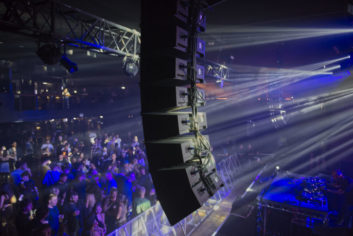 While the pandemic has dominated life for over two years, there have been other factors that have also made an impact on pro audio business. These include a severe shortage of electronic components, which was already happening pre-Covid, an increase in shipping costs, exacerbated by the pandemic, the blocking of the Suez Canal in March 2021 and the UK leaving the European Union (EU). “One of the core ongoing things in the market is stock supply,” observes Turney. “It goes back much further than just the manufacturers not having product on the shelf to the chip set manufacturers not having stock and beyond that to raw materials not being dug up for the better part of two years.”
While the pandemic has dominated life for over two years, there have been other factors that have also made an impact on pro audio business. These include a severe shortage of electronic components, which was already happening pre-Covid, an increase in shipping costs, exacerbated by the pandemic, the blocking of the Suez Canal in March 2021 and the UK leaving the European Union (EU). “One of the core ongoing things in the market is stock supply,” observes Turney. “It goes back much further than just the manufacturers not having product on the shelf to the chip set manufacturers not having stock and beyond that to raw materials not being dug up for the better part of two years.”
Even without the complications of supply shortages, the pandemic made some manufacturers very cautious in their production strategies. “We took the opposite approach [because] we understood there was going to be some hesitancy among buyers in the early stages but we were extremely confident about the long-term prospect for the industry,” says Joe Andrulis, executive vice president of corporate development at Biamp. “We doubled down on inventory, both in raw materials as well as finished goods, with the expectation that those who perhaps were a little more conservative might struggle to supply as demands began to rebound.”
The supply chain is beginning to return to expected levels but that is taking time. Brexit has added to this, with increased paperwork and apparently some freight forwarding companies initially not being prepared enough, which caused further delays. Alex Lepges, technical director for EMEA region at Audio-Technica Europe, comments that Brexit has made logistics between the UK and the EU “more complex”, while allocating stock between the two sides is “more challenging” now. “We will see what the future brings in terms of trade agreements between the UK and EU when the governments have time to look into this post-Covid and [after] other challenges to deal with currently.”
BREXIT BAD
Joe Bull, managing director of hard disk recorder developer JoeCo, is more forceful in his assessment of the UK no longer being in the EU. “The impact of Brexit has been even worse than the pandemic,” he says. “The ability to ship goods into Europe quickly has been completely destroyed. A shipment that three years ago would have taken two days door-to-door can often take over a month now with fully accurate and correct paperwork. European customers are looking to suppliers from other countries as the UK is now seen as a little backwater populated by idiots.”
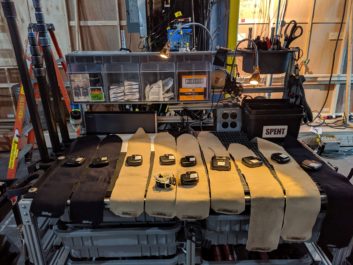 Bose’s Hans Vereecken is not quite as damning but does says there have been “multiple impacts” on business, beginning with importing products into the UK. “It now takes additional time and increases both the workload and cost,” he says. “Additionally, product certification, including the UK CA mark [for machinery safety and compliance] next to CE certification (EU conformity), requires a significant amount of work to update products and the whole supply chain.”
Bose’s Hans Vereecken is not quite as damning but does says there have been “multiple impacts” on business, beginning with importing products into the UK. “It now takes additional time and increases both the workload and cost,” he says. “Additionally, product certification, including the UK CA mark [for machinery safety and compliance] next to CE certification (EU conformity), requires a significant amount of work to update products and the whole supply chain.”
International companies have not been immune to the fallout from Brexit but the effects have varied. “As a global manufacturer based in the EU, Brexit did not have a huge impact on day-to-day business,” comments Jonathan Reece, head of global sales strategy for KV2. “As the UK distributor, personally it has been a slightly frustrating time for me, with extended transit times, excessive paperwork, moving goalposts and subsequent fees to carry out the same activities as you have been doing for years.”
For James King at Martin Audio, disruption to the supply chain resulting from the pandemic is difficult to separate from those caused by Brexit: “As a global supplier we took steps before Brexit to ensure we had available stock and warehousing space within the EU so our delivery times wouldn’t be affected. The supply chain issues for components is being felt all over the world. It won’t be until this is sorted out that we will be able to truly see any impact that Brexit has had on our business.”
WAVES SUBSIDE
Some companies are already seeing improvements and getting a sense of how the market will continue with the UK out of the EU. “Now the initial waves of uncertainty have receded, things are stabilising,” says Ole Jensen, international sales director of Genelec. “As an EU manufacturer there have been no real changes in activity on the pro audio side, while online MI sales going from mainland Europe
to the UK, and vice versa, have more or less ceased.”
Shure has not experienced a direct impact on regional sales due to Brexit, although, as Peter James, vice president of global sales for pro audio, concedes, it is still difficult to tell given the problems caused by Covid. “There have certainly been administrative challenges,” he says, “and many customers in the live music sector face new difficulties in staffing and documenting European tours that include or originate from the UK.”
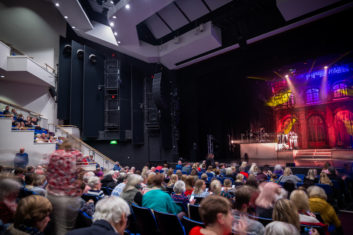 The world health crisis, combined with political and commerce issues, has somewhat overshadowed technology considerations over the last few years, but Kalle Hvidt Nielsen at DPA finds a positive from Covid in that it “ramped up” the transition from analogue to AoIP. “We’ve also seen a shift from passive speakers towards active speakers,” he adds. Ian Bridgewater of TOA observes that AoIP “allows interaction between different product ranges, giving greater flexibility in combining systems”. Certainly AoIP can now be seen as well established for networking in pro audio, to the point where it is what Joe Andrulis at Biamp calls “a baseline technology”.
The world health crisis, combined with political and commerce issues, has somewhat overshadowed technology considerations over the last few years, but Kalle Hvidt Nielsen at DPA finds a positive from Covid in that it “ramped up” the transition from analogue to AoIP. “We’ve also seen a shift from passive speakers towards active speakers,” he adds. Ian Bridgewater of TOA observes that AoIP “allows interaction between different product ranges, giving greater flexibility in combining systems”. Certainly AoIP can now be seen as well established for networking in pro audio, to the point where it is what Joe Andrulis at Biamp calls “a baseline technology”.
Of emerging technologies, Andrulis highlights audience engagement systems, which are intended to improve the interchange between a presenter and the audience for a more participative experience. He also calls spatial audio a “hot thing right now”, particularly in creating immersive environments. Alex Lepges at Audio-Technica describes immersive audio as the “big challenge to find creative solutions to match the expectations of listeners”. David Claringbold from d&b sees it as a “driving force of innovation” in pro audio, with interest increasing since the pandemic.
CLOUD TECH
LEA Professional’s Blake Augsburger cites something that is already making its mark on the consumer and broadcast markets as a consideration in pro audio. “Cloud technology has gone from a nice thing to have to being a must-have in the industry,” he says. “The capability delivers greater visibility to provide preventative maintenance, easier troubleshooting and fewer on-site maintenance requirements.” (Click here for more from Augsburger on this subject.)
For James King of Martin Audio, DSP to control and optimise the soundfield is the most important technology driver today: “DSP has been and will continue to be a major part of modern audio systems. Long sessions tuning audio systems and ‘cheap seats’ are quickly becoming a thing of the past as our ability to use DSP creates the same sonic experience for every seat in the house.”
ROMANTIC HOPES
Those seats are now being occupied again as audiences return to theatres and concert venues. Peter James at Shure concludes that there are high, almost romantic hopes for pro audio and the general entertainment market after the uncertainty and disruption of the last few years.
“The outlook is very positive, with talk of an artistic renaissance appearing to be real and likely,” he says. “Artists and audiences have been starved of live performance and the appetite to get back is higher than ever. Technology will play its part and there are exciting things to come that will improve the audience experience.”
